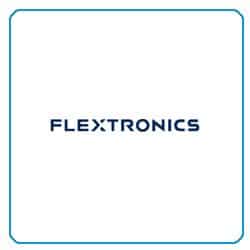Introduction to Printed and Flexible Electronics
Printed and flexible electronics, also known as flexitronics, is a rapidly growing field that combines the versatility of Printed Electronics with the adaptability of flexible substrates. This innovative technology has the potential to revolutionize various industries, from consumer electronics to healthcare and beyond. In this comprehensive article, we will explore the world of flexitronics, its applications, manufacturing processes, and future prospects.
What is Flexitronics?
Flexitronics refers to the development and production of electronic devices and circuits on flexible substrates, such as plastic, paper, or textiles. Unlike traditional rigid electronics, flexitronics allows for the creation of bendable, stretchable, and conformable devices that can adapt to various shapes and surfaces. This unique characteristic opens up a wide range of possibilities for designers and engineers to create innovative products that seamlessly integrate into our daily lives.
Advantages of Flexitronics
-
Flexibility and Stretchability: Flexitronic devices can bend, twist, and stretch without losing their functionality, making them suitable for applications that require conformity to irregular surfaces or movement.
-
Lightweight and Thin: Flexible electronics are typically thinner and lighter than their rigid counterparts, allowing for more compact and portable devices.
-
Cost-effective: The use of printed electronics techniques and low-cost substrates can significantly reduce the manufacturing costs of flexitronic devices compared to traditional silicon-based electronics.
-
Eco-friendly: Many flexitronic devices use biodegradable or recyclable materials, reducing electronic waste and promoting sustainability.
Applications of Flexitronics
Wearable Electronics
One of the most promising applications of flexitronics is in the field of wearable electronics. Flexible sensors, displays, and circuits can be seamlessly integrated into clothing, accessories, and even directly onto the skin. Some examples include:
-
Smart Clothing: Garments embedded with flexible sensors can monitor various biometric data, such as heart rate, respiration, and body temperature, providing real-time health monitoring and fitness tracking.
-
Electronic Skin Patches: Thin, flexible patches containing sensors and wireless communication capabilities can be applied directly to the skin for continuous monitoring of vital signs, medication delivery, or wound healing progress.
-
Flexible Displays: Bendable and rollable displays made possible by flexitronics can enable the development of more compact and portable devices, such as smartwatches, smart glasses, and foldable smartphones.
Healthcare and Medical Devices
Flexitronics has the potential to revolutionize the healthcare industry by enabling the development of novel medical devices and diagnostic tools. Some applications include:
-
Implantable Devices: Flexible sensors and electrodes can be implanted inside the body to monitor physiological parameters, stimulate nerves, or control prosthetic limbs, offering improved biocompatibility and reduced risk of tissue damage compared to rigid implants.
-
Disposable Diagnostic Tools: Low-cost, disposable flexitronic devices can be used for point-of-care testing, such as glucose monitoring, pregnancy tests, or infectious disease detection, making healthcare more accessible and affordable.
-
Flexible Imaging Systems: Conformable X-ray detectors and ultrasound transducers based on flexitronics can adapt to the body’s contours, providing better image quality and patient comfort during medical imaging procedures.
Energy Harvesting and Storage
Flexitronics can also play a crucial role in the development of flexible energy harvesting and storage devices, enabling the creation of self-powered electronic systems. Some examples include:
-
Flexible Solar Cells: Thin-film photovoltaic cells printed on flexible substrates can be integrated into building facades, vehicle surfaces, or wearable devices to harvest solar energy and power electronic components.
-
Flexible Batteries: Printed, thin-film batteries can be seamlessly integrated into flexible electronic devices, providing a compact and lightweight power source.
-
Piezoelectric and Triboelectric Generators: Flexible piezoelectric and triboelectric materials can convert mechanical energy from motion, vibration, or friction into electrical energy, enabling the development of self-powered sensors and wearable devices.
Robotics and Soft Machines
Flexitronics can enable the development of soft, deformable robots and machines that can adapt to complex environments and interact safely with humans. Some applications include:
-
Soft Actuators: Flexible electronic actuators, such as dielectric elastomer actuators or ionic polymer-metal composites, can mimic the movement of natural muscles, enabling the creation of compliant and biomimetic robotic systems.
-
Flexible Sensors for Robotics: Flexible tactile, pressure, and strain sensors can provide robots with a sense of touch, allowing them to perform delicate tasks and interact more effectively with their surroundings.
-
Wearable Robotic Assistive Devices: Soft, flexible exoskeletons and assistive devices powered by flexitronics can help individuals with mobility impairments or enhance human performance in various applications.

Manufacturing Processes for Flexitronics
The production of flexitronic devices involves various printing and patterning techniques that allow for the deposition of functional materials on flexible substrates. Some common manufacturing processes include:
-
Inkjet Printing: A digital printing technique that precisely deposits droplets of conductive, semiconductive, or dielectric inks onto a substrate to create electronic circuits and components.
-
Screen Printing: A stencil-based printing method that uses a mesh screen to transfer functional inks onto a substrate, enabling the production of thicker and more robust printed layers.
-
Gravure Printing: A high-speed, roll-to-roll printing process that uses an engraved cylinder to transfer functional inks onto a substrate, allowing for the mass production of flexitronic devices.
-
Flexography: A rotary printing technique that uses a flexible relief plate to transfer functional inks onto a substrate, offering high-speed printing capabilities and compatibility with a wide range of materials.
-
Laser Patterning: A non-contact patterning method that uses laser energy to selectively remove or modify material layers on a substrate, enabling the creation of high-resolution patterns and structures.
These manufacturing processes, along with advancements in material science and device design, have enabled the rapid development and commercialization of flexitronic devices.

Challenges and Future Prospects
Despite the numerous advantages and potential applications of flexitronics, there are still some challenges that need to be addressed for the widespread adoption of this technology. Some of these challenges include:
-
Material Compatibility: Ensuring the compatibility and adhesion of functional materials with flexible substrates and developing materials that can withstand repeated bending and stretching without degradation.
-
Encapsulation and Packaging: Developing reliable encapsulation and packaging techniques to protect flexitronic devices from environmental factors, such as moisture, oxygen, and mechanical stress.
-
Standardization and Scalability: Establishing industry standards and scalable manufacturing processes to ensure the consistency, reliability, and cost-effectiveness of flexitronic devices.
As research and development in flexitronics continue to progress, we can expect to see more innovative applications and products in the near future. Some potential future developments include:
-
Fully Integrated Wearable Systems: The integration of flexible sensors, displays, energy harvesters, and storage devices into a single, seamless wearable system for continuous monitoring and interaction.
-
Implantable Bioelectronics: The development of flexible, biocompatible electronic devices that can be implanted inside the body for long-term monitoring, stimulation, and treatment of various medical conditions.
-
Smart Packaging and Logistics: The integration of flexible sensors and RFID tags into product packaging and logistics systems for real-time monitoring of product quality, shelf life, and supply chain management.
-
Flexible Hybrid Electronics: The combination of flexible printed electronics with conventional rigid components, such as microcontrollers and wireless communication modules, to create more complex and versatile electronic systems.

Frequently Asked Questions (FAQ)
-
What is the difference between printed electronics and flexible electronics?
Printed electronics refers to the use of printing techniques to deposit functional materials and create electronic circuits and components. Flexible electronics, on the other hand, refers to electronic devices and circuits that can bend, stretch, or conform to various shapes and surfaces. Flexitronics combines both concepts, using printing techniques to create flexible electronic devices. -
What are the most common substrates used in flexitronics?
The most common substrates used in flexitronics include: - Polyethylene terephthalate (PET): A transparent, flexible plastic film widely used in printed electronics.
- Polyimide (PI): A high-performance polymer with excellent thermal and mechanical stability, often used for high-temperature applications.
- Paper: Low-cost, eco-friendly, and biodegradable substrate suitable for disposable electronic devices.
-
Textiles: Woven or non-woven fabrics that can be functionalized with electronic components for wearable applications.
-
What are the main challenges in the mass production of flexitronic devices?
The main challenges in the mass production of flexitronic devices include: - Ensuring consistent and reliable device performance across large-area substrates.
- Achieving high-speed, roll-to-roll manufacturing processes while maintaining quality and yield.
- Developing robust encapsulation and packaging techniques to protect devices from environmental factors.
-
Establishing industry standards and supply chains for materials, processes, and device integration.
-
How do flexitronic devices compare to traditional rigid electronics in terms of performance?
Flexitronic devices may have lower performance compared to traditional rigid electronics in terms of processing speed, power consumption, and device density. However, they offer unique advantages such as flexibility, stretchability, and conformability, which enable novel applications and form factors that are not possible with rigid electronics. -
What is the future outlook for the flexitronics industry?
The flexitronics industry is expected to grow significantly in the coming years, driven by the increasing demand for wearable electronics, IoT devices, and smart packaging solutions. According to market research reports, the global flexible electronics market is projected to reach over $70 billion by 2028, with a compound annual growth rate (CAGR) of around 11% during the forecast period.
| Application | Examples | Key Benefits |
|---|---|---|
| Wearable Electronics | Smart clothing, electronic skin patches, flexible displays | Continuous monitoring, comfort, and ease of use |
| Healthcare and Medical Devices | Implantable sensors, disposable diagnostics, flexible imaging | Improved biocompatibility, accessibility, and patient comfort |
| Energy Harvesting and Storage | Flexible solar cells, batteries, and piezoelectric generators | Self-powered devices, compact and lightweight power sources |
| Robotics and Soft Machines | Soft actuators, flexible sensors, wearable robotic assistive devices | Adaptability, safe human-robot interaction, and enhanced performance |
Conclusion
Printed and flexible electronics, or flexitronics, is a rapidly evolving field that combines the benefits of printed electronics with the versatility of flexible substrates. This innovative technology has the potential to revolutionize various industries, from consumer electronics and healthcare to energy and robotics. With ongoing research and development in materials science, manufacturing processes, and device integration, we can expect to see more groundbreaking applications and products in the near future. As the flexitronics industry continues to grow and mature, it will play a crucial role in shaping the future of electronics and enabling new possibilities for human-technology interaction.

No responses yet